If you are trying to learn how to do Amazon FBA Product Research you have come to the right place. Learn the ins and outs of how to find profitable products that sell and can be the cornerstone of your Amazon business. Our team has been selling on Amazon since 2010 and has compiled everything they know on this subject into this guide. It is dense enough to be a paid course but we prefer to share it for free. Let’s get started!
What is Amazon FBA Product Research?
When we talk about Amazon FBA product research, we’re essentially discussing the art and science of spotting products with high profit potential. It’s like being a detective, sifting through clues to find the gems that consumers will love and buy. This process isn’t about guessing; it’s about analyzing data to make informed decisions on what items will likely turn a profit on Amazon.
Before we begin: Every Amazon Seller needs a suite of tools for Keyword Research, Product Development, and Listing Optimization. Our top pick is Helium 10 and readers of this post can get 20% off their first 6 months by clicking the image below.

There are a few different approaches to product research, each catering to various selling strategies on Amazon. Let’s break these down:
Private Label: This is about creating your own brand. You find a product that’s already popular, add your unique twist, and sell it under your personal brand. It’s a way to stand out in the crowded marketplace. In this guide we are focusing on Amazon FBA product research for private label but the techniques and tools can apply to the other methods.
Wholesale: In this model, you’re buying products in bulk directly from the manufacturer at a discounted rate and selling them on Amazon. It’s straightforward but doesn’t involve building brand equity and defendable detail pages like Private Label does.
Retail Arbitrage: This involves purchasing products from retail stores at a discount and then selling them on Amazon for a profit. It’s a bit like treasure hunting in the clearance aisle. It could be a great way to get started but isn’t as long term of a business as FBA private label.
Dropshipping: Here, you sell products on Amazon but don’t handle the inventory or shipping yourself. You take orders, and your supplier ships them directly to the customer. It’s a hands-off approach to selling.
Each of these methods offers its own set of opportunities and hurdles, yet they all hinge on the fundamental step of product research. While this guide will primarily focus on the Private Label approach, it’s important to note that many of the tools, techniques, and tricks we’ll discuss are versatile enough to benefit anyone interested in launching an Amazon business, regardless of the model they choose. So, this guide is a must-read for any budding Amazon entrepreneur looking to carve out their niche in the marketplace.
Why is Amazon FBA Product Research Important?
Why exactly is product research so crucial when selling on Amazon? Well, it boils down to a few essential points:
Finding Profitable Products: This is the cornerstone of any successful Amazon business. Product research helps you identify items that not only sell but also bring in a healthy profit margin.
Understanding Customer Needs: Product research gives you deep category knowledge that helps your marketing. By diving deep into customer preferences and trends, you can tailor your listings to better meet those needs. This insight allows you to enhance your product descriptions, images, and features, making your listings more attractive to shoppers.
Sustaining Brand Growth: The marketplace is always evolving, with some products phasing out and new opportunities emerging. Continuous product research ensures your brand stays relevant and grows by replacing declining items with new winners.
Diversifying Your Catalog: A diverse product catalog can protect your business against market fluctuations and changes in consumer behavior. Product research identifies new opportunities to expand your range and appeal to a broader audience.
Remember, the best sellers on Amazon don’t see product research as a one-and-done task. It’s an ongoing process, a habit that keeps them at the forefront of the market. Staying in “product research mode” means you’re always ready to adapt, innovate, and lead in your niche, ensuring your Amazon business thrives long-term.
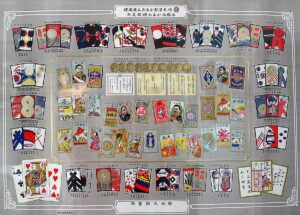
Fun fact, Nintendo started in 1889 as a trading cards company and launched a precursor to the Nintendo Entertainment System in 1977. Talk about always being in product development mode!
Amazon FBA Product Research Tools: Unlocking the Data to Find Profitable Products
To do product research effectively, a paid tool is pretty much a must-have, and Helium 10 is the one we’ll talk about in this guide. It’s packed with features for digging into keywords, trends, and filtering a massive database of Amazon products. We will be covering how to use these tools later in the article. You can view more tools on our list: Best AI Tools for Amazon Sellers.
Amazon FBA Product Research Criteria: What Makes a Winner?
Most successful Amazon FBA products share similar traits. Let’s go over the common traits of successful products so you will understand what to be searching for.
Sales Potential: How many units per month?
One of the best parts of Amazon is you are able to tap into their existing demand. You don’t need to invent a new category; successful products meet what customers are already searching for.
To figure out how well a product sells, check the Best Seller Ranking (BSR) which can be found towards the bottom of its detail page.
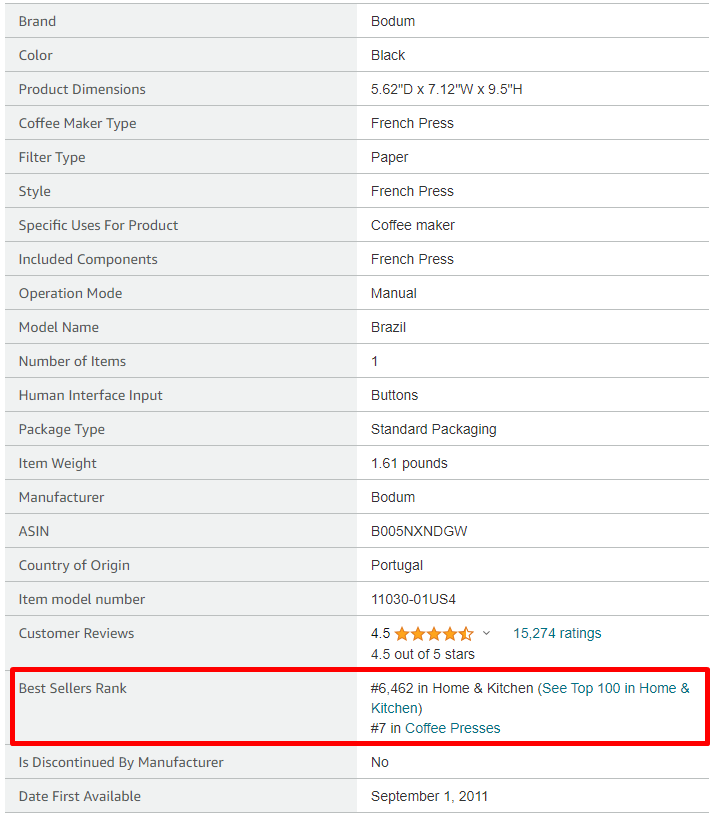
You can also use Helium10’s free Chrome extension to view the BSR in search results which makes it easier to analyze sales volume for a page of search results.
A lower BSR means higher sales. BSR is relative to the category though so in order to translate that into units sold per month you can use the same Helium10 Chrome extension.
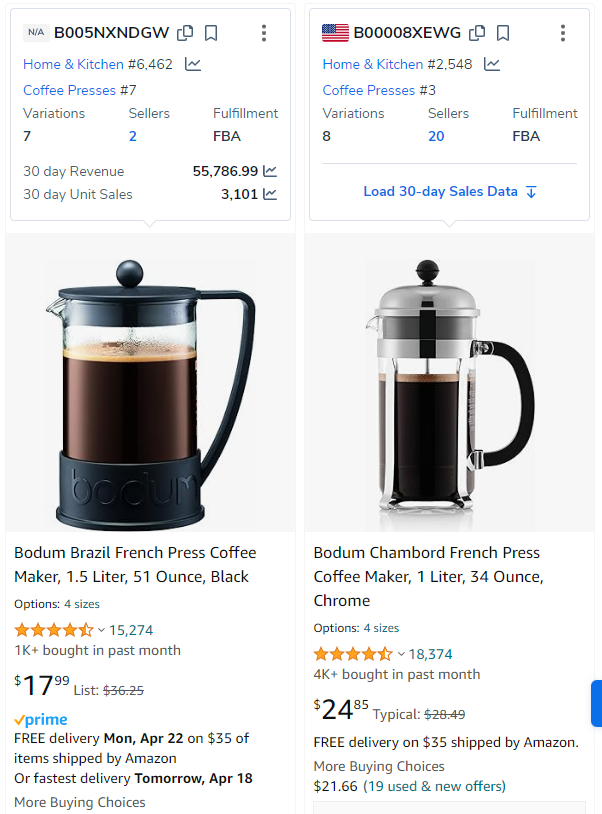
What is a good BSR for Amazon FBA? What counts as “good” sales varies—higher-priced items with strong margins don’t need to sell as many units to be profitable. And what’s significant extra income for one seller might not be for another. Use your own judgement but assume you will only capture a % of the total market, not the entire thing.That said, a general range for units sold per month is around 250-400 units
Pricing and Profitability: Does it Make Money?
Now that we understand how to check sales volume, let’s talk about pricing and profitability.
Profit Margin Goals:
Your product must not only sell well but also maintain a healthy profit margin. Targeting a margin of 15-20% is a solid starting point.
Amazon Fees and Product Expenses
Amazon Selling Fees:
Monthly Seller Central Fee: $39.99/month.
Referral and Fulfillment Fees: Fees vary by category, influenced by the product’s size and weight. The FBA Revenue Calculator is essential for estimating these costs effectively. Find a competitor that has a similar size and weight to the product you want to make. Use their ASIN in the FBA calculator to estimate what your fees will be.
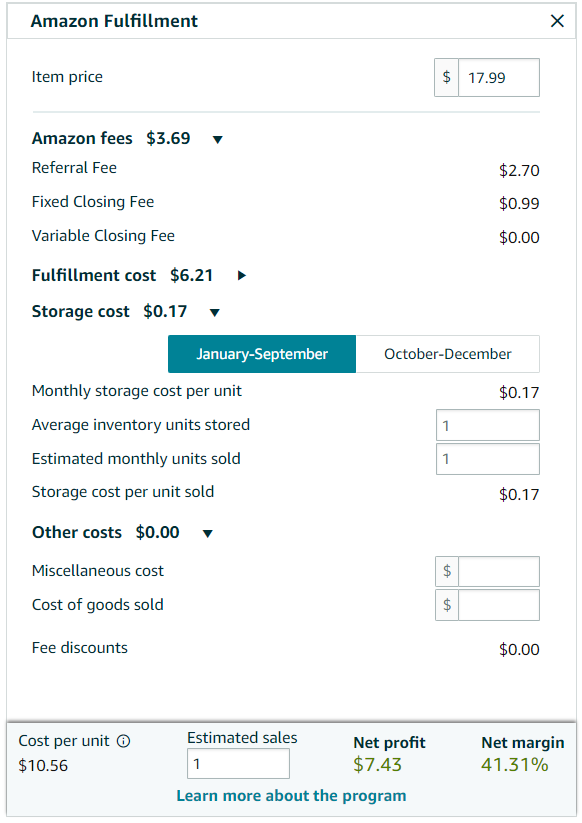
Storage Costs: Both short-term and long-term storage fees at Amazon’s warehouses, plus potential 3PL costs, need consideration.
COGs: The sum total of factory, packaging, freight, and customs duties forms your base product cost.
Returns: A necessary evil in eCommerce, returns can impact your bottom line.
Advertising: Established brands typical used Total Advertising Cost of Sales or TACoS for their budget. TACoS can range from 5-20% of total sales on your account. A new brand that is launching from scratch would need to be on the higher end of the range around 15-20% while an established brand that brings in their own customers and has existing sales may be on the lower end around 8-12%.
Launch Expenses:
-Ordering samples
-Packaging design
-Product Photos and Video
-A+ Content creation
-Giveaways
Ideal Pricing Ranges
Pricing your product correctly is more art than science, striking a balance between covering costs, making a profit, and appealing to consumers.
The sweet spot in selling on Amazon is to stay within the Impulse Buy price range but staying high enough that you have enough margin to cover all related expenses and still make a decent profit per sale.
A general range sellers typically target is $20-$80. Anything lower and there won’t be much profit left. You will need to make it up in volume which is a tough game. Anything higher and you leave the impulse category and will have to do more outside marketing and customer education to make a sale.
Another thing to consider is your initial investment. Factories have Minimum Order Quantities. If you are selling a $80 product, it might cost $20. A 500 unit MOQ is pretty standard and that will set you back $10,000.
Seasonality and Trends:
Seasonality and trends are crucial pieces of the puzzle when picking a winning product. Sure, a seasonal spike around holidays is pretty standard and can boost sales for most products. However, you want to steer clear of items that heavily depend on a specific season—think pool floats that sell only in summer. This kind of extreme seasonality profits during a brief window each year and can leave you with unsold inventory that sits until the next year if you don’t hit your projections.
What you’re really looking for is a product that sells relatively consistently year-round, with possible peaks during certain seasons. Stability is key.
Trend-wise, aim for a category that’s on the upswing, with a few years of growth behind it. Jumping on brand-new trends is riskier as they could just be passing fads. However, if you find one early that has long term potential that is a winner. A great example would be cold plunge kits a few years ago. Always avoid categories that are on the decline.
Helium10’s extension can show you BSR trends, giving you a visual on how a product’s demand is moving over time.
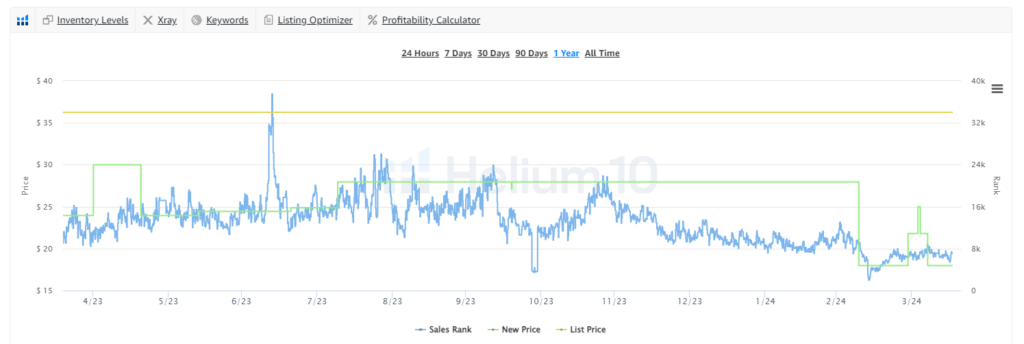
Keyword trends are useful to track overall categories. Helium10’s Magnet tool lets you track search volume trends, helping you spot both emerging opportunities and fading interests.
Keywords: Money Keywords Plus Long Tail
Speaking of keywords— for a product to truly succeed on Amazon, it should target a strategic mix of keywords. Yes, aiming for a few high-volume, popular keywords is key because they attract the most traffic. However, the reality for new products is that these ‘money keywords’ are tough to rank for right out of the gate. That’s where long-tail keywords come in. These are the more specific, less competitive keywords with lower search volumes. They’re your entry point, easier to rank for initially, and can kickstart your sales velocity and review accumulation. This foundation is critical for eventually tackling and ranking for those high-demand keywords.
You can use Helium 10’s Magnet to find keywords based on a starting search query or you can use Cerebro to find your Amazon competitor keywords.
Besides traffic you need to consider how competitive the keywords are. How do you gauge the competition for a keyword? A quick look at the number of search results can give you a clue.
However, the total results may be misleading. The first couple of pages might be filled with results that aren’t even relevant to the search term. If there are only a couple of results relative to the term on page one that is a good sign.
Competition: Can you Compete?
Speaking of competition, while you are searching for keywords, manually review the top-ranking products for those keywords and ask yourself, “Can my product stand out here? What can I do to make my product a better choice for customers?” Using an extreme example, you are not going to compete with Apple for the “iPhone” keyword.
Pay close attention to the review ratings of top sellers. Products showing under a 4.3-star rating, which rounds down to 4 stars on Amazon, signal a golden opportunity. It suggests customers are finding issues with current offerings, giving you a clear opening to innovate and improve.
But there’s more to consider than just ratings.
Here’s a quick checklist to assess how competitive a product is:
Price: Can you offer a competitive price while still maintaining healthy profit margins?
Product Images: Do the top listings have high-quality images, and do they offer a variety of them? This can significantly influence a customer’s buying decision.
Titles and Bullets: Are their product titles and bullet points clear, compelling, and packed with benefits and keywords?
A+ Content: This enhanced brand content can make listings more appealing. If your competitors don’t have it, it’s an advantage for you. If they do, you’ll need to match or exceed their quality.
Prime Eligibility: Products that are Prime-eligible typically have higher conversion rates. If your competitors are not using Prime and the you can it could be a significant advantage.
Amazon Product Research Tips: A couple of cautions as you evaluate your competition:
Chinese Factory Direct Listings: They can aggressively undercut on price and might engage in less-than-ethical marketing practices. Competing on price alone here can be tough. Brandable product categories would give you the best odds of competing as they tend to lack in the branding department.
Established Brands: They come with big ad budgets and customer loyalty, which can make competing on cost-per-click (CPC) advertising more challenging. However, this doesn’t automatically disqualify the niche—it just means you need a solid strategy. Some big brands have higher pricing so you may be able to compete by offering a more affordable alternative.
The ability to improve upon what's currently available is perhaps the most crucial factor. If you can design a product that better meets customer needs and fills gaps that competitors are overlooking, you're on your way to carving out your own successful space on Amazon.
Brand Potential: Can you Build More than just a Product?
A great way to stand out from competition is to create an actual brand. Does the product have the potential to create content and a community around it? Do you have the passion to evangilize the product and brand? Can you add complementary products in the future?
Bringing your own traffic and customers to Amazon would definitely give you a leg up on the sellers who rely 100% on Amazon PPC.
Recurring Revenue: One Customer Multiple Sales
Recurring revenue is like striking gold in the world of Amazon selling. Products that customers need to buy repeatedly—like supplements or other consumables—are perfect for this. They offer the potential for steady income through repeat purchases. Sure, these kinds of products can be super competitive, but if you’re savvy enough to spot a small, growing niche, you might just land yourself in an enviable position early on.
So, why are these products such a big deal? For starters, they allow you to justify a higher ad spend to acquire customers, knowing that you’ll likely recoup your costs and more over the customer’s lifetime. They also tend to have higher conversion rates; when people need to replenish something they use regularly, they’re more likely to make a purchase. Plus, this model is a fantastic way to build brand loyalty and a long-term customer base. With steadier sales and profits, you can plan and grow your business with more confidence. And let’s not forget about Amazon’s Subscribe and Save feature, which can be a game-changer for both you and your repeat customers
This one isn’t required but would be a big win if you can make it happen.
Gated vs Ungated and Legal Considerations
Gated vs. Ungated Categories: Amazon has certain categories that are restricted, meaning you need approval to sell in them. While getting into these gated categories is possible, it adds an extra layer of complexity, especially for new sellers. It’s an additional step that requires preparation and understanding of Amazon’s requirements. To view a list of gated categories click here.
Patented Products: Tread carefully around patented products. Always check the product detail pages and the products themselves for any patent numbers or notices of a patent pending. If you spot these, it could signal legal restrictions on selling similar items. Remember, this is just a heads-up, not legal advice.
Trademarks: Using another product’s trademarks in your title or detail page is a no-go. This is particularly relevant if you’re selling accessories or products that integrate with other brands. For example, avoid using terms like “Ninja Foodi” for accessories. If Trademarked terms are related to your Money Keywords then you will have problems marketing your products.
Velcro, in fact, demands referring to similar products by generic terms like “hook and loop fasteners” or “self fasteners” instead. Also, the word “Thermos” has also become a generic term but is still trademarked, illustrating how careful you need to be even with words that feel common. Here is a list of other trademarks that have become common words.
Ease of Manufacturing
Starting simple is key when launching your first product on Amazon. Opting for an item that’s straightforward to manufacture minimizes the risk of defects, which in turn reduces the likelihood of negative reviews. This initial simplicity gives you room to learn the ropes without being overwhelmed by complex manufacturing challenges. As you gain experience and confidence, you can gradually venture into more complex products, expanding your portfolio with items that may require a more intricate manufacturing process or more intensive support. This step-by-step approach helps ensure a solid foundation for your Amazon business.
How to do Amazon FBA Product Research
Now you know what to look for in a winning product. But how do you start your search? Enter Product Research Tools.
Amazon FBA Product Research Tools:
Amazon Product Research Tools are essential for finding a winning product. These tools are powerful databases that track everything from sales data to reviews on billions of Amazon listings, allowing you to filter and discover potential products effectively.
There are many product research tools out there each with their different strong points. For this post I will focus on my favorite product research too: Helium10’s BlackBox.
Helium 10 BlackBox
BlackBox is a product-hunting tool from Helium 10 that allows you to filter from a host of different fields to find potential product opportunities. It requires a subscription to Helium 10 but readers of this post can get 20% off for their first 6 months by signing up through our referral link.
Here is a list of the different filters you can use on BlackBox to find winning products:
- Review Count
- Review Rating
- Best Seller Rank
- Shipping Size and Weight
- FBA or no FBA
- Number of Images
- Number of Variations
- Title Keywords
- Listing Age
- Number of Sellers
- Price
- Monthly Revenue
- Monthly Units
- Sales to Reviews Ratio
Using the criteria of what makes a winning product we can enter the following filters and start searching:
- Review Rating Max 4.2
- Sales Price: Min $20, Max $80
- Monthly Units: Minimum 200
- Shipping Size: Small Standard
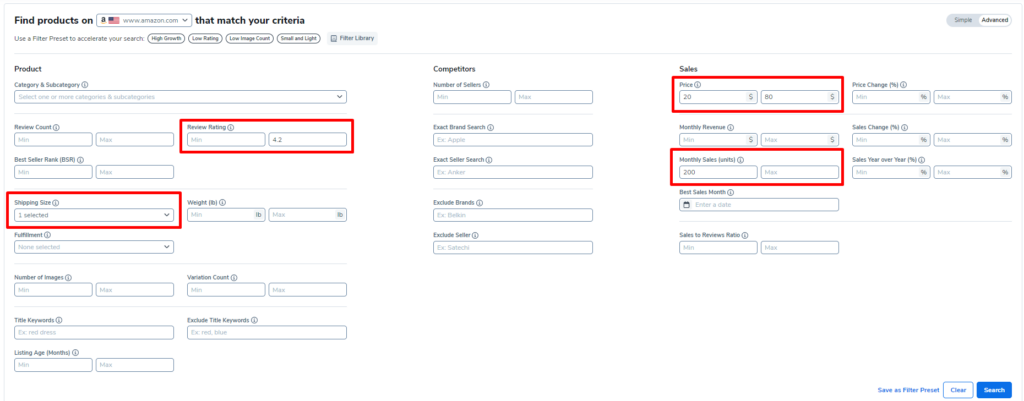
Even with all of these filters we still have over 500 results. From here you can start to search through the list and find more filters to include to make the results more relevant to you. For example, these results have many in the Clothing category. If this isn’t in your niche, you can exclude it from the results in your next run.
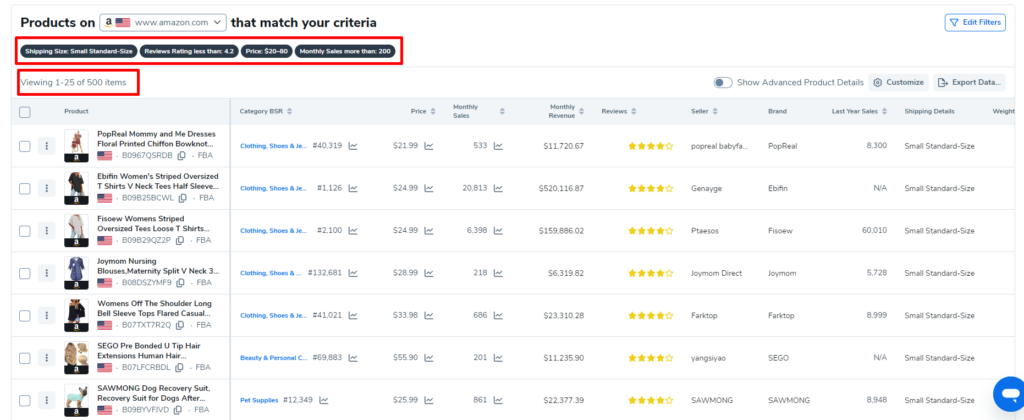
This only scratches the surface of what BlackBox can do. Check out our Helium 10 Black Box Tutorial to become an expert.
Trend Tools:
Besides the heavy-duty Amazon product research tools, tapping into broader market trends is another smart way to find product ideas. Trend tools can give you insights into what’s gaining popularity, fading out, or maintaining a steady interest across various platforms. Here’s how they work and what they offer:
- Google Trends: Lets you see the search interest over time for keywords or topics, providing a global view of what’s hot.
- EtsyHunt: Great for spotting trending products in the handmade, vintage, and unique product spaces.
- Redditlist: Helps you catch up with trending topics and interests across different Reddit communities.
- Pinterest Trend Report: Offers insights into what people are pinning, reflecting emerging trends in a variety of niches.
- TikTok Creative Center: Shows what’s trending on TikTok, from hashtags to sounds, which can be a goldmine for product ideas.
- Exploding Topics: Curates fast-growing topics before they become popular, giving you a jump on emerging trends.
- Trend Watchers: Alerts you to new trends in various categories, helping you find niche product ideas early.
- Trends.co: Provides a weekly newsletter on trending startup ideas, products, and markets.
Using these tools, you can identify potential products that are beginning to capture the public’s interest or are consistently popular, giving you a wide lens on what could work well on Amazon. Each tool offers a unique perspective, from social media trends to search interest over time, empowering you to make informed decisions on product selections.
Amazon Best Seller Pages
Exploring the Amazon Best Sellers page is like having a direct line to what’s currently winning in the marketplace. It’s packed with insights and inspiration for your next product idea. Here’s what to focus on:
- Amazon Best-Seller List: This is the top-selling products across various categories. It’s a clear indicator of what customers are buying right now.
- Amazon Movers & Shakers: This section highlights products that have seen a significant uptick in sales rank over the past 24 hours. It’s great for spotting sudden trends or seasonal picks.
- Amazon “Most Wished For”: Products here are what people are adding to their wish lists the most. This can give you insight into consumer desires and potential upcoming purchases.
- Amazon “Gift Ideas”: Especially useful during holiday seasons or for finding products that are popular as gifts, which can be a different angle on what consumers find valuable.
Each of these sections offers a unique lens on the marketplace, from current best-sellers to rapidly rising stars and the products that consumers are thinking about. Checking these can help you identify patterns, understand consumer behavior, and pinpoint areas where you might carve out a niche for your own products.
Advanced Strategy: Expired Patents
An advanced strategy for finding unique product ideas involves searching for expired patents. This approach can uncover opportunities to innovate on or reintroduce products that were once protected by patents but are now in the public domain. A prime example is the Ninja Cremi, which took inspiration from technologies previously patented by PacoJet that were only available in commercial kitchens. Once a patent expires, the door opens for entrepreneurs to develop products based on those inventions without infringing on intellectual property rights.
This method requires a bit of legwork and familiarity with navigating patent databases, but it can pay off by identifying gaps in the market where you can introduce improved versions of products that were previously patented. It’s an opportunity to breathe new life into great ideas that are no longer legally restricted, allowing for creative freedom and innovation. Just ensure you’re correctly identifying patents that have truly expired and that you’re not infringing on active patents.
How to Make Your Product Stand Out on Amazon and Beat the Competition
Designing a Better Product Based on Customer Reviews
Once you have identified the product you want to sell, it is now time to make it stand out from the competition. This is one of the most important steps to product development.
There are two ways to do this process
The old way is to read hundreds of reviews left on your top competitor’s detail pages, write down what customers are complaining about and thinking of creative ways to solve the issues. This process can take several hours but it is a step you can’t skip unless you try the second method.
The new way is to let AI do the heavy lifting for you. After years of developing products for Amazon we developed an AI tool for Amazon Sellers that can do this process automatically in a couple of minutes.
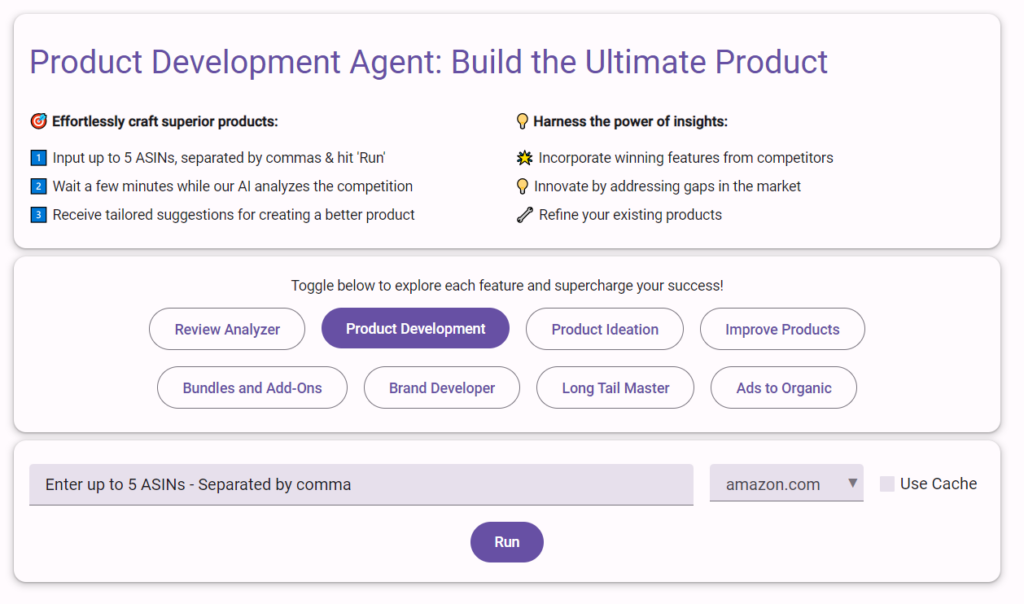
Here is how to use AI to make your product stand out in 3 steps:
Step 1) Paste the best-selling competitors into app.yourecomagent.com’s Product Development Agent and click Run.
Step 2) Wait while the AI reads and analyzes their detail pages and reviews.
Step 3) In a couple of minutes you will receive a Product Development Report that will include the must-have features you need to include in your product as well as ways you can stand out by solving common customer complaints.
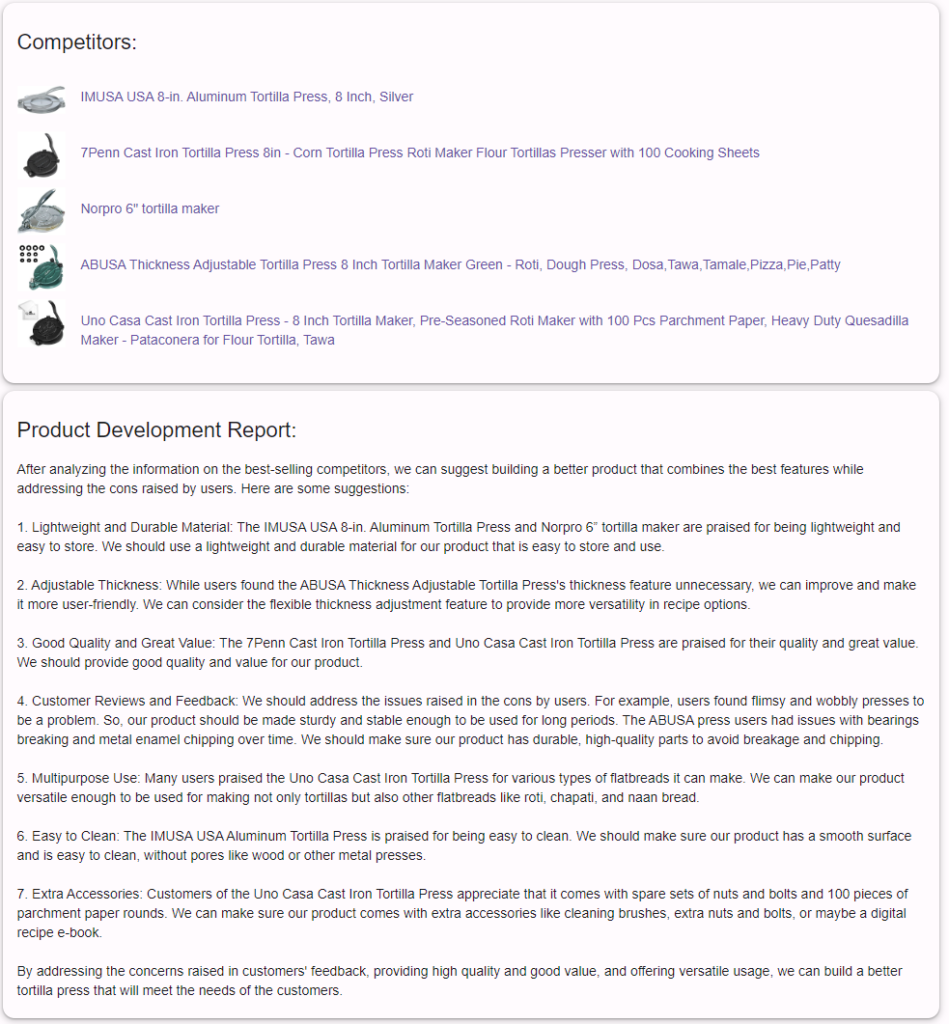
Using AI saves hours of time which allows you to launch more products in less time. Sign up for a free trial to test it out.
Make Your Offer Stand Out with Add-Ons
In addition to solving customer complaints, you can also stand out by including small and inexpensive Add Ons to your product that increase the value of the product.
A great example of an Add On is adding Coffee Filters and a Scoop to a Coffee Maker.
You can put these Add Ons into your main image so that the customer sees the extra value in search results and decides to click on your listing instead of the competition.
We made an AI Tool for this as well. Simply input an ASIN and it will automatically generate Add On product ideas that are inexpensive and small and will help your product stand out.
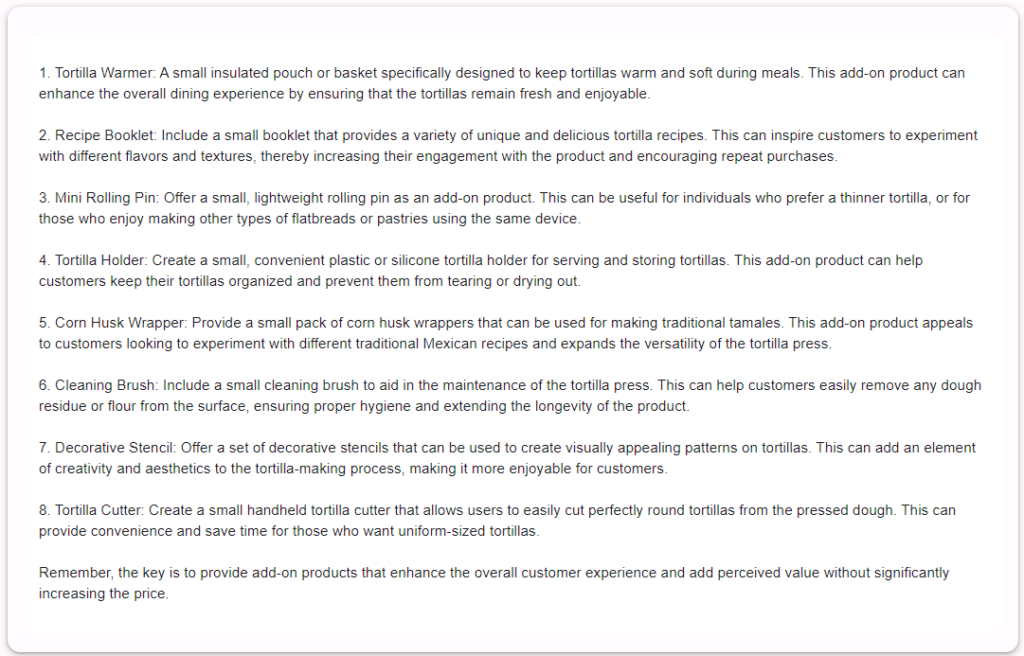
Should You Pay for Amazon FBA Product Research?
Deciding whether to pay for product research services is a significant choice for any Amazon seller. The best approach? Learn the ropes yourself first. Understanding the ins and outs of product research empowers you to make informed decisions and sets a foundation for your business. Once you’re knowledgeable, you might consider paying for additional help, but with the insight to guide and coach your helpers effectively.
Amazon FBA Product Research Pitfalls to Avoid
Steering clear of certain pitfalls can save you time, money, and frustration. Here are some key things to avoid:
Me Too Products: Jumping into a market flooded with identical products can make it incredibly challenging to stand out. Instead, look for ways to differentiate your offering, whether through quality, branding, or unique features.
Not Knowing Your Numbers: Understanding your costs, from manufacturing to shipping and advertising, is crucial. Failing to do so can quickly erode your profits. Make sure you have a clear picture of your financials before diving in.
Too Competitive with Ad Spend: High competition can lead to skyrocketing advertising costs, making it difficult to maintain profitability. Research niches where you can achieve visibility without unsustainable ad spend.
Creating Your Own Market: While innovation is valuable, trying to introduce a completely new product concept on Amazon can be risky and expensive. It often requires extensive customer education and marketing efforts.
Too Much Risk on Your First Order: Starting with a massive inventory order increases your risk if the product doesn’t sell as expected. Begin with smaller orders to test the waters and adjust based on demand.
By avoiding these common mistakes, you can better position your Amazon business for success, focusing on building a sustainable and profitable venture from the start.
Wrapping it all Up:
There you have it. Now you know how to do Amazon FBA Product Research and make your product stand out from the sea of competition.
The next step is to get started in your product research journey.
What is the easiest way to get started?
My advice? Sign up for a month of Helium 10 today and start trying different filters with BlackBox. You will get the hang of it quickly and it opens up the doors to start discovering products.
Happy Hunting!
